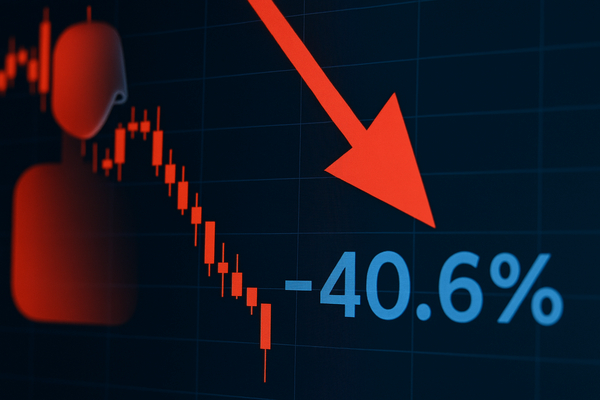
Market snapshot: product launches and price action
Alight, Inc. (NYSE: ALIT) unveiled a limited release of a conversational generative-AI tool for Alight Worklife® on October 28, 2025, positioning the company to offer personalized benefits guidance during the 2025 annual enrollment season. The product news arrives as Alight’s stock trades at $3.09 after a 40.6% decline over the past six months. That divergence — fresh product investment alongside a steep share-price contraction — frames investor debate over execution risk versus long-term optionality.
AI rollouts versus investor punishment: the contrast in sentiment
The ALIT announcement is juxtaposed with a negative analyst-style headline recommending selling; one recent column explicitly highlighted the six-month, 40.6% drop and the current $3.09 trading level as reasons for shareholder concern. Market participants often treat early-stage AI deployments as strategic positives only when near-term revenue or margins reflect the investment. For context in the enterprise-software cohort, Five9 (NASDAQ: FIVN) has been moving the other way on perception: its recent commentary around an Afiniti partnership and AI-driven agent matching comes while the stock shows eroded momentum — a 1-year total shareholder return of -21.3% and a more dramatic -41.5% return year-to-date. On a typical trading day referenced in coverage, FIVN shares slipped less than 1%, underscoring how headline partnerships can fail to offset recent multi-quarter re-pricing.
Analysts are repricing risk — price-target moves to watch
Wall Street is actively re-evaluating valuations. Iridium Communications’ consensus price target was lowered from $33.38 to $31.00, signaling analyst caution on growth assumptions and competitive pressure. In chemicals, Alembic Global trimmed Huntsman Corporation’s (NYSE: HUN) price target to $11 while keeping an Overweight rating, a combination that highlights a selective bullish view despite a lower valuation reference. Energy coverage also shows recalibration: FLEX LNG’s (FLNG) price target was reduced by 12.65% to $24.48. Those concrete adjustments — $31.00, $11, and $24.48 — reflect ongoing analyst attempts to anchor expectations to updated revenue or margin scenarios rather than rely on prior multiples.
Where consumer and housing demand still shows up
Not all sectors are being re-priced downward. Century Communities (NYSE: CCS) continues product launches that point to steady demand at specific price points: the company debuted two new model townhomes in American Fork, Utah on October 18, 2025, and announced Century Complete’s North Fork at Laughlin Ranch community selling online and in-person from the low $300s. Those concrete price-entry points — homes starting in the low $300,000s — help explain why some builders can still market inventory and preserve revenue per lot even as broader macro concerns persist. For income-oriented retailers, J & J Snack Foods (Nasdaq: JJSF) has set its fiscal Q4 and full year results release and conference call for November 17, 2025, providing a near-term data point investors can use to assess consumer demand trends in snack foods.
Small-cap volatility under the microscope
Smaller-cap names are showing sharp directional moves that reflect concentrated sentiment and lower liquidity. Sable Offshore (NYSE: SOC) rallied 13.12% between October 17 and October 24, 2025, reflecting an idiosyncratic jump that traders could attribute to project developments or sentiment flows. By contrast, Vital Farms (VITL) has seen heavy selling pressure — down 15.2% over four weeks — and media noted the stock is technically in oversold territory while analysts have been revising earnings estimates higher. Insperity (NSP) offers another example of repricing: shares stood at $45.54 in coverage, down nearly 8% over the past month and more than 40% on a 1-year total return basis, suggesting investors are penalizing firms exposed to labor-cost or outsourcing-cycle risks.
Quarterly calendars and corporate events to monitor
Upcoming and recent company events create potential catalysts. Criteo S.A. (CRTO) published a Q3 2025 slide deck and hosted its earnings call on October 29, 2025 — a concrete reporting date tied to third-quarter metrics. Energizer Holdings (NYSE: ENR) will webcast its fourth-quarter and fiscal-year 2025 results on November 18, 2025, at a 10:00 a.m. ET start for the investor call. Liquidia Corporation (LQDA) provided a transcript on October 28, 2025 at 2:00 p.m., discussing inhaled therapies and drug-delivery technology. These calendar entries — Oct. 29, Nov. 18, Oct. 28 and specific call times — remind traders that fresh revenue and margin numbers will either validate or contradict current price moves.
What the flows imply for positioning
The mix of product launches, analyst cuts, and disparate share moves suggests active repositioning. Alight’s $3.09 trade level and 40.6% six-month decline imply the market is assigning substantial near-term execution risk to an otherwise strategic AI push. At the same time, measured price-target reductions — Iridium to $31.00, FLEX LNG to $24.48, and Huntsman to $11 — indicate analysts are compressing upside assumptions rather than abandoning coverage. Traders can interpret the 13.12% swing in SOC and the 15.2% drop in VITL over four weeks as hallmarks of lower-liquidity beta: individual news items or estimate revisions drive outsized percentage moves in single names.
How to watch the next few weeks
Investors should track three quantifiable items: (1) upcoming earnings and webcasts with fixed dates — Criteo on Oct. 29, Energizer on Nov. 18, and J & J Snack Foods on Nov. 17 — for fresh revenue and margin reads; (2) analyst-price-target changes, such as Iridium’s move to $31.00 and FLEX LNG’s 12.65% reduction to $24.48, which signal where consensus expects valuations to settle; and (3) short-term price action and percent moves in liquidity-sensitive names — ALIT at $3.09 after a 40.6% six-month slide, SOC’s 13.12% weekly surge, VITL’s 15.2% four-week drop, and NSP’s $45.54 level after a near 8% monthly decline and >40% 1-year loss. Those quantifiable markers will tell whether investors are rewarding execution (e.g., revenue or bookings beats) or continuing to punish perceived execution risk.
In the current trading environment, timely numbers — share prices, percent changes, price-target adjustments and scheduled results — are the clearest tools for parsing where capital is flowing and why.












